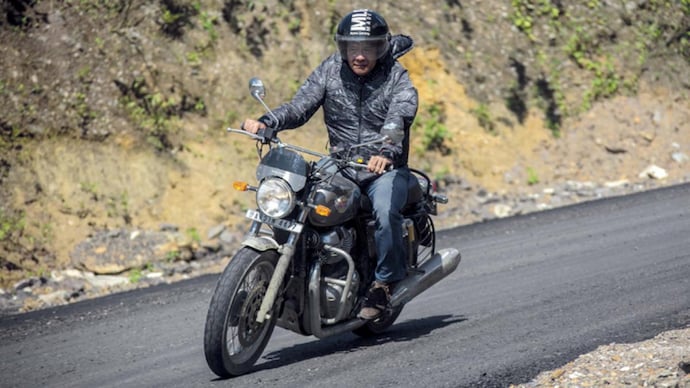Racing Ahead | Arunachal Pradesh
The state has significantly expanded its road network in recent years and is improving its education sector and police force by increasing personnel.

Thanks to its strategic location and geo-political significance in the context of India's relationship with China, as well as the Narendra Modi government's push for border road development, Arunachal Pradesh has seen a massive development of its road network over the past five years. Recently, Union minister of state for home affairs G. Kishan Reddy said that the government had approved the construction of 18 roads in the state, stretching over 1,600 kilometres, at a cost of Rs 1,175 crore.
However, the most significant among all road projects is the trans-Arunachal highway, connecting Tawang, a town of strategic importance on the India-China border in the northwestern part of the state to Kanubari in the southeastern tip of Arunachal Pradesh. The highway ends in Assam's Dhemaji district beside the Bogibeel bridge, which was inaugurated in December 2018.
Stretching over 1,800 km in length, the road connects 12 of the state's 16 district headquarters, while the remaining four districts and the state capital are being connected through a link road 848 km in length. While construction began in 2008, only 120 km of the road had been constructed by 2014, while 442 km of the highway was completed between 2015 and 2018.

The push has come not just from the Union government.
In October, the Cabinet Committee for Infrastructure (CCI), headed by Chief Minister Pema Khandu, approved proposals worth Rs 25,000 crore for infrastructure development in the state. Of that amount, Rs 1,100 crore has been earmarked for the upgradation of road infrastructure of the state capital complex and all district headquarters, as well as road connectivity to all ADC/ SDO headquarters.
While the state's infrastructure has been given a big boost, Arunachal Pradesh faces formidable challenges when it comes to education. In absolute numbers, the state's education sector is abysmal. For instance, it has the highest dropout rate in the entire country- 23.3 per cent, almost four times the national average of 6.35 per cent.

The chief minister is aware of this grave situation and has said that several measures are being taken to improve the situation. The state's education department has inked memoranda of understanding with reputed national NGOs on this count- for instance, to provide project management support in the implementation of schemes to improve the state's education sector and to undertake programmes of their own. The state government has also begun recruitment processes for 125 post-graduate and 540 trained graduate teachers through competitive examinations conducted by the Arunachal Pradesh Public Service Commission. To add capacity, the state has also established 717 'smart classrooms', with 800 more such classrooms being developed. The state also has a Sainik School in Pasighat- these educational establishments also act as feeder institutions to defence institutes like the NDA- with two others being implemented, according to the chief minister. And in January this year, under the Acharya Dronacharya Gurukul Yojana, the government inaugurated a residential-cum-coaching clinic for meritorious students.
Another priority for the state government has been law and order. In November, Chief Minister Pema Khandu said that the state government would raise two new police battalions. "Law and order has always been a priority and all efforts are being made to strengthen policing in the state," the chief minister was quoted as saying, adding that the government would soon fill around 1,000 vacant posts in the existing police force. He claimed that the government had sanctioned enough funds for police modernisation and to bridge the gap between required infrastructure and manpower and available strength. The state has already done well in bridging the gender gap in its police force- Arunachal Pradesh is among only six Indian states and Union territories that have over 15 per cent female representation in their police force.
